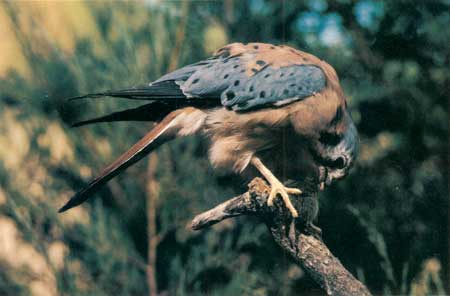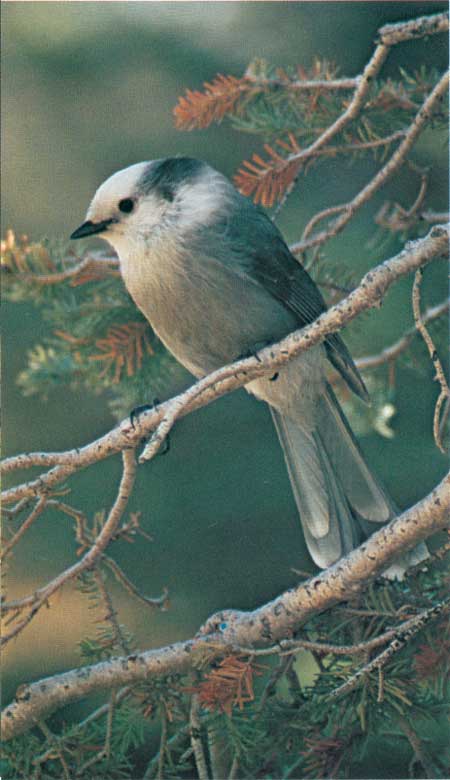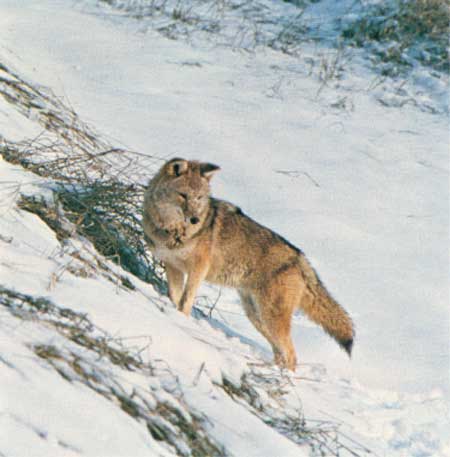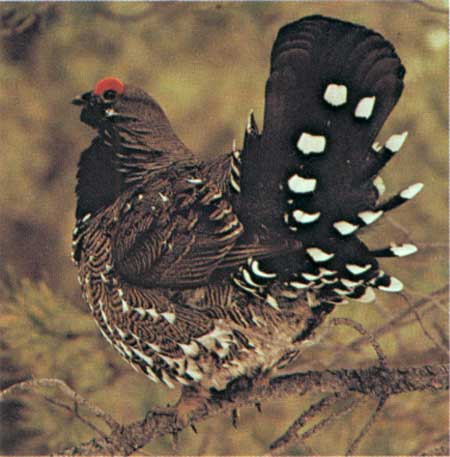
Because of the high reproductive capacity of insects and
small mammals, if all their offspring survived the earth's plant life
would be consumed within one year. This is prevented by natural controls
such as predation and parasitism. The American kestrel ("sparrow hawk")
feeds primarily on large insects and on small rodents such as the meadow
vole here.
|

Gray jays are found in the deep coniferous forests of
the park. In some parks gray jays, or "camp robbers," loiter about
campgrounds and picnic areas begging or stealing food. In Glacier,
however they are seldom noticed as they search out seeds, berries, and
insects.
|

A generalized predator, the coyote will eat almost
anything, from berries to carrion. When man eliminated most of the
coyote's enemies and competitor, including the wolf, grizzly, and
cougar, it enlarged its range to fill the void. Intelligent and social,
the coyote thrives despite man's persecution. Although most numerous in
the prairie community, it ranges up to timberline.
|

The spruce grouse is a year-round resident of the
spruce/fir and lodgepole communities. It forages on the ground for seeds
and insects, in winter turning to needles. Several other species of
grouse occupy different habitats in Glacier.
|
|









